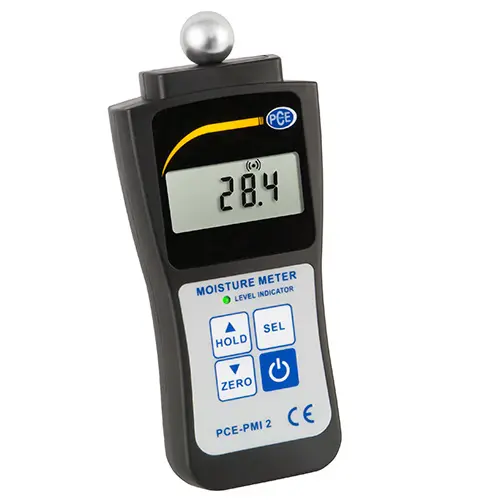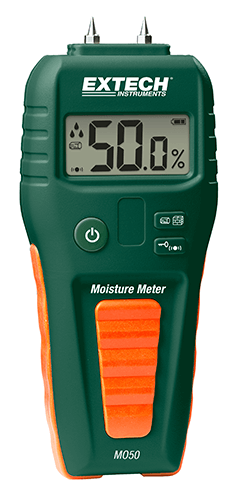Exactly how to Utilize a Moisture Meter to Find Surprise Water Damages in Your Building
Exactly how to Utilize a Moisture Meter to Find Surprise Water Damages in Your Building
Blog Article
Recognizing the Importance of a Wetness Meter in Preventing Mold and Water Damage in Your Home
In the world of home upkeep, the existence of moisture can often be a quiet yet formidable foe, capable of creating pervasive mold and mildew growth and perilous water damage if left uncontrolled. Among the relaxing atmosphere of a home, hidden wetness concerns can make below the surface, presenting a danger to both home and wellness. Nonetheless, outfitted with the right devices and knowledge, property owners can proactively combat these potential dangers. Understanding the importance of a wetness meter in this fight is not simply an alternative but a calculated need.

Significance of Wetness Discovery
Reliable moisture detection techniques are crucial for protecting properties and avoiding possible mold and mildew development and water damage. Moisture can leak right into different building materials, leading to architectural concerns and carcinogen - Moisture Meter. By utilizing a wetness meter, building proprietors can proactively identify areas susceptible to excess wetness, enabling for timely intervention and reduction approaches
Moisture meters supply precise readings of moisture levels in various products such as drywall, wood, and concrete. This information assists in identifying areas of issue, even in concealed or hard-to-reach locations. Early detection of wetness build-up enables prompt repair services or changes to avoid more damages.

How Moisture Meters Job
Moisture meters play a pivotal function in the aggressive identification of excess dampness, helping in the prevention of potential mold and mildew growth and water damages by supplying precise analyses of moisture degrees in various structure materials. Some advanced moisture meters pin both integrate and pinless innovations for thorough moisture detection. Comprehending exactly how moisture meters feature is vital for accurate and prompt dampness degree analyses, enabling effective preventive steps versus mold and mildew and water damages.
Detecting Early Indication
Upon initial inspection of a residential property, acknowledging subtle indications of excess wetness ends up being essential in the early discovery of possible mold growth and water damages. Some typical early warning indicators consist of mildewy odors, water stains on walls or ceilings, peeling paint or wallpaper, and distorted or stained surfaces. Mildewy odors typically show the visibility of mold or mold, even if no noticeable indications are apparent. Water stains can signify leakages or infiltration, while peeling off paint or wallpaper might be an outcome of wetness compromising the bond of these products to the surface area. Warped or blemished surfaces, such as buckling floorboards or stained drywall, are clear indications of water damages. Moisture Meter. In addition, a boost in allergic reaction signs or respiratory system issues amongst occupants might recommend the existence of mold and mildew because of excess wetness. By without delay determining and addressing these early indication, home owners can reduce the risk of substantial mold development and water damage in their residential properties.


Preventing Mold And Mildew Growth
Identifying early caution indicators of excess dampness within a dig this building not just allows prompt detection of prospective mold development and water damage but additionally acts as an aggressive measure in preventing the proliferation of mold and mildew. To successfully stop mold growth, it is essential to deal with any resources of dampness without delay. This can consist of repairing leaks in pipelines, windows, or roofing systems, making certain correct ventilation in moist areas like restrooms and kitchens, and making use of dehumidifiers in high-humidity rooms. Consistently keeping the building and checking's plumbing, roof, and seamless gutters can also aid in preventing water intrusion that could result in mold and mildew development.
Monitoring dampness levels in areas prone to dampness, such as basements and creep rooms, making use of a wetness meter can likewise help in early detection of raised wetness degrees and prospective mold development. By taking positive procedures to protect against excess moisture and mold growth, property owners can protect their building and interior air top quality.
Advantages of Routine Surveillance
Regular surveillance of dampness degrees in a residential property can play a critical duty in preserving a healthy and balanced indoor atmosphere and avoiding possible mold and mildew and water damages. By frequently examining moisture degrees, homeowners can discover any concerns immediately and take required activities to avoid mold and mildew growth and water damages. Among the crucial advantages of regular tracking is very early detection. By recognizing and dealing with high dampness levels beforehand, property owners can interfere before mold and mildew has the opportunity to create and spread out. This aggressive method can conserve both money and time over time by stopping extensive mold removal and repair expenses (Moisture Meter).
Moreover, routine surveillance enables home owners to track patterns and trends in dampness levels gradually. By establishing a baseline and surveillance modifications, people can determine any kind of areas of problem or prospective vulnerabilities in the building's structure. This data-driven method makes it possible for targeted treatments and upkeep efforts to attend to underlying concerns prior to they escalate into even more significant problems. Ultimately, the constant surveillance of dampness degrees encourages property owners to safeguard their property, guard their health, and preserve the stability of their interior atmosphere.
Verdict
In final thought, using a dampness meter is necessary in protecting against mold and mildew and water damage in homes. By spotting early indication of wetness, homeowners can take aggressive procedures to avoid mold development and expensive repair services. Routine monitoring with a dampness meter can assist preserve a healthy interior atmosphere and safeguard the architectural honesty of the home. It is a useful tool for ensuring the safety and security and well-being of residents.
By using a moisture meter, residential property proprietors can proactively identify areas susceptible to excess moisture, enabling for prompt intervention and reduction techniques.
Moisture Check This Out meters provide exact analyses of wetness degrees in different products such as drywall, wood, and concrete.Wetness meters play a critical role in the proactive identification of excess wetness, helping in the prevention of prospective mold Continue growth and water damage by providing accurate analyses of dampness degrees in different building products. Comprehending exactly how moisture meters function is necessary for prompt and precise wetness level assessments, enabling efficient precautionary steps against mold and water damages.
Keeping an eye on wetness levels in areas vulnerable to dampness, such as basements and crawl rooms, using a wetness meter can likewise aid in very early detection of elevated moisture degrees and potential mold and mildew growth.
Report this page